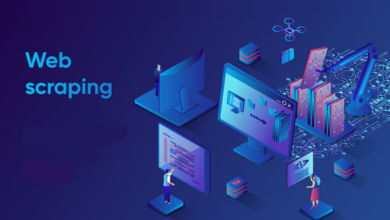Software vs. Hardware: Which One Will Dominate the Tech Industry in 2023?

Software vs. Hardware
The world of technology is rapidly evolving, and we’re seeing exciting innovations every day. The rise of artificial intelligence, cloud computing, and the internet of things (IoT) has opened up a world of possibilities. But when it comes to the future of tech, there’s a longstanding debate between hardware and software. Which one will dominate the tech industry? In this article, we’ll delve deeper into the two sides of the debate and try to answer this question Software vs. Hardware.
What is Hardware?
Hardware refers to the physical components of a computer or device. This includes the computer’s motherboard, processor, memory, hard drive, and other components. Hardware is tangible, and you can touch and feel it. It’s the foundation of any computer system and plays a crucial role in its performance.
Hardware is essential for creating the devices and machines that make our lives easier. For example, smartphones, laptops, and smartwatches are all hardware products that we use daily. The hardware industry is massive, with millions of devices being produced and sold every year.
What is Software?
Software refers to the programs, applications, and operating systems that run on hardware. It’s the intangible part of a computer system that we can’t touch or feel. Software is what makes our devices come to life, and it’s what we interact with when using our computers and other gadgets.
Software is essential for creating the user experience and functionality of devices. For example, the Windows operating system, Microsoft Office, and Adobe Photoshop are all software products that we use daily. The software industry is also massive, with billions of dollars being spent on software development and licensing every year.
Hardware vs. Software: The Pros and Cons
Now that we have a basic understanding of what hardware and software are let’s delve deeper into the pros and cons of each.
Hardware Pros:
- High Performance: Hardware components are designed to perform specific tasks, which makes them faster and more efficient than software.
- Tangible: Hardware is physical, which makes it easier to understand and work with.
- Longevity: Hardware typically lasts longer than software, and it can often be upgraded or repaired to extend its lifespan.
Hardware Cons:
- Cost: Hardware is often more expensive than software, especially when it comes to high-performance components.
- Limited Functionality: Hardware can only perform specific tasks, and it’s not as versatile as software.
- Compatibility Issues: Hardware components may not be compatible with other devices or software, which can lead to issues.
Software Pros:
- Versatility: Software can perform a wide range of tasks, and it’s not limited by physical components.
- Cost: Software is often less expensive than hardware, especially when it comes to productivity applications.
- Upgrades: Software can be easily upgraded and updated to improve functionality.
Software Cons:
- Performance: Software is typically slower than hardware, and it may not be able to perform certain tasks as efficiently.
- Complexity: Software can be complex and challenging to understand, especially for non-technical users.
- Compatibility Issues: Software may not be compatible with certain hardware components, which can lead to issues.
Which One Will Dominate the Tech Industry?
Now that we’ve looked at the pros and cons of hardware and software let’s try to answer the big question: which one will dominate the tech industry?
The answer is that it’s impossible to say for sure. Both hardware and software are essential components of the tech industry, and they work hand in hand. While hardware is crucial for creating the devices and machines that we use every day, software is what makes them come to life and provides us with functionality.
In recent years, we’ve seen a shift towards software-based solutions, with cloud computing and software as a service (SaaS) becoming increasingly popular. However, hardware still plays a crucial role in the tech industry, especially with the rise of IoT devices and smart home technology. Hardware advancements, such as faster processors, larger memory capacities, and improved battery life, are necessary for creating the next generation of devices.
Ultimately, the future of tech will be shaped by both hardware and software, and they’ll continue to work in tandem to create new innovations and improve existing technology. It’s not a competition between the two, but rather a collaboration that drives the tech industry forward.
The Importance of Quality in the Tech Industry
While the hardware vs. software debate is an interesting one, there’s another crucial factor that will shape the future of tech: quality. Quality should be a top priority for both hardware and software manufacturers, as it’s what separates the best products from the rest.
In the hardware industry, quality means creating products that are reliable, durable, and perform at a high level. Consumers want devices that are built to last, and they’re willing to pay a premium for products that meet these criteria.
In the software industry, quality means creating applications that are user-friendly, efficient, and secure. Consumers want software that’s easy to use and doesn’t slow down their devices. They also want software that’s secure and protects their personal data.
In both cases, quality is crucial for building a loyal customer base and staying ahead of the competition. Companies that prioritize quality are more likely to succeed in the long run and dominate their respective markets.
Read More:The Dark Side of Software: Uncovering the Hidden Dangers in 2023
Conclusion
The hardware vs. software debate is an interesting one, but it’s not a competition. Both hardware and software are essential components of the tech industry, and they work together to create the devices and applications that we use every day.
While we may see a shift towards software-based solutions in the coming years, hardware advancements will continue to play a crucial role in the tech industry. Ultimately, quality is what separates the best products from the rest, and it should be a top priority for all tech companies.
As the tech industry continues to evolve, it’s exciting to think about what new innovations and advancements will emerge. One thing is for sure, though: both hardware and software will continue to shape the future of tech for years to come.











